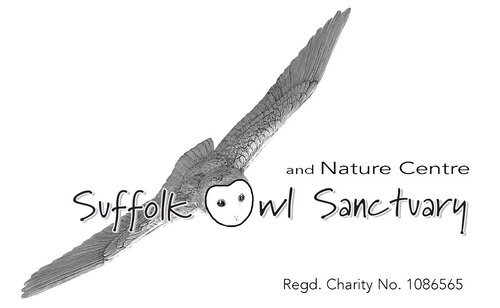Regardless of the continuing bouts of freezing snow and icy rain, the falconers are now looking ahead to the Spring (can’t quite imagine it at the moment) and more particularly the beginning of April, which is when the Sanctuary’s flying displays will begin again - each one an integral part of our aim to educate & enthuse our visitors about not only the beauty but the necessity & value of ensuring a safe environment for future generations of British bird of prey species in the wild.
Over the winter the flying display team have had the opportunity for some well deserved rest & relaxion and are now ready to start exercising their flight muscles again for the coming season. Some of the birds will also have begun to moult their feathers at the end of last season and, all spruced up and refreshed can begin some serious retraining.
‘Reclaiming’ the birds, as this preparation is called, is a time consuming and complex business and requires each bird to be carefully health checked and weighed, as most of them will have put on weight over the winter months to help them survive through the freezing, wintry weather. Beaks need to be inspected to see if they need ‘coping’, whereby any overgrowth is carefully filed back and talons may need clipping if they have become over-long. (You can read more about this in our blog of 09.02.09).
Over the winter months, the flying display birds will have had a pretty sedentary lifestyle, much as they would in the wild so, as with any exercise, the falconers will build up the birds’ flying regime carefully to avoid any risk of strain or injury.
This year is going to be a particularly busy one at the Sanctuary, as we have a whole host of exciting events lined up and of course every day there will be the opportunity to observe one of our spectacular flying displays, providing a chance to see some of the world's most beautiful birds of prey show off their aerial prowess.
More to a feather than meets the eye
All birds of prey have attractive and sometimes stunning plumage, but there’s much more to the simple feather than one would imagine.
To begin with, if you pick up a feather it weighs almost nothing and yet a bird’s feathers are strong enough to withstand the buffeting of the severest windy weather and will insulate them even in arctic conditions – amazing stuff!
Of course not all feathers are the same and birds have layers of feathers which all have their own role to play. First of all there are the ‘down’ feathers, which those of us with a few years under our belts will fondly remember as making the softest pillows and, more recently, the cosiest duvets. And this is precisely what these feathers are for, they are the closest to a bird’s body and are designed to keep them warm.
Semiplume feathers make up the next layer and are a cross between down feathers and slightly stronger, more structured feathers and Filoplume feathers are almost hair like, similar to those you might find left on a chicken. Bristle feathers are the almost whisker-like feathers that are most commonly found around the beak and eyes of bird of prey.
The most varied feathers are the Contour feathers, which are those that you see on the outside. These differ widely in shape, size and colour and also depending on the species of bird. Contour feathers do exactly what they say on the tin (bird?), they mold themselves to the part of the body they are laying against, hence giving a bird its shape.
Feathers range widely in terms of softness and harshness, being harder for birds of prey that fly at very high speeds and tending to be softer on younger raptors than more mature birds.
The Primary feathers are those found at the tip or a bird’s wings and are most important for a bird’s ability to control its flight.
One of the most important functions of feathers however, is that they are an excellent indicator of a bird’s health and well-being. New feathers can show stress marks if a bird is starving or has an unbalanced diet and changes or distortions in the shaft of the feather can be indicative of illness or disease.
So next time you find a feather, perhaps take a moment to stop and reflect – it’s not just a feather, but a real miracle of nature!
































